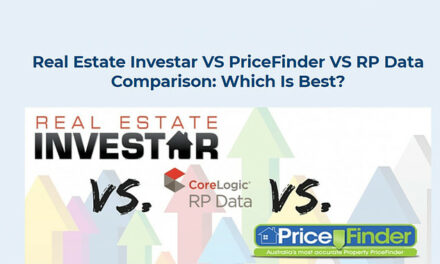When property investors and developers purchase properties and not all of them follow the investors’ convenience. In some cases, the investor needs to do some modification and customization in those purchased properties to make them in line with development requirements, and sometimes to make them appealing for tenants.
Out of the many things developers do to develop those properties, one of the common alterations is pool demolition, backfilling and compaction. This article contains some valuable tips for the same, which would make the process a less challenging one for you.
Sometimes, investors like the property very much and get excited to purchase it. They like the house, garden around it, location, and area. However, it is not that all the properties investors buy are 100% perfect.
For example, if there is a swimming pool and investors think that it is just a waste of land or makes the property not appealing to the prospective tenant, then there is a problem. In that case, a pool demolition or backfilling process can be carried out, if that helps you achieve your ultimate goal as a property developer.
Factually, demolition refers to break or destroy. That is to say, removal and eradication of a building or part of it from a certain location is the idea. Here, pool demolition refers to filling a swimming pool using sand, dirt, and gravel so that the pit becomes a constructible flat lot.
Backfilling should be done with trusted material. For example, using quality material guarantees that the pool will be compactly filled so that there are no chances of sliding off the land piece on that particular pool location. That is to say, during the rainy season, the filled land must not collapse. This will be ensured by quality material only.
One more tip for pool demolition or backfilling is that the concrete wall around the pool must be removed first. Before start backfilling, the walls should be broken up. After that, a pool can be filled with sand, gravel, and dirt.
However, Pool Demolition, Backfilling and Compaction are not that simple. That’s why we need to take a step back and cover it all, with some basics and key questions.
So, let’s start the tips for Pool Demolition, Backfilling and Compaction, with a simple question. Why would a property developer need a pool demolition?
Why Does a Property Investor or a Developer Need a Pool Demolition?
Here are some of the most common reasons why a developer would need backfilling or pool demolition.
1. No one is using it for a while:
It is the most common reason for pool demolition. If the developer is not using the pool or there is no need for the pool, then it could be backfilled or repurposed.
There could be many reasons why a property investor does not want to leave the pool as is.
For instance, the property investor or none of the family members (or tenants) knows how to swim or kids are old enough that they don’t want to use the pool leisurely. In this case, the pool could be removed if no one is using it. It will increase the free land area where an extension to the house could be built.
Remember, sometimes a beautiful garden with a pergola can add value to your property, where an unmaintained (dysfunctional) pool can eat into the value.
2. The pool is occupying extra space:
Large pools sometimes occupy a major portion of the property. The occupied space might be used for another purpose if available, as I just touched on above. Hence, pool demolition becomes a wise move.
The demolition, backfilling, and compaction will result in some free space occupied by the useless swimming pool.
3. High maintenance and repair costs:
Experienced property developers and investors make decisions based on numbers, considering income and costs. Those fundamentals remain when the time comes to decide on a pool, to keep it, to modify it or to demolish it.
If a pool drain money from your pocket, it is a liability. That means compared to the net outcome of owning the pool likely pull out the money from the investors’ pocket.
For example, in the book called “RICH DAD, POOR DAD”, the author Robert Kiyosaki refers to the house you live in as the liability of investors. The house you live in never bring you income… is it? These liabilities cost money. The bigger your palace and the mortgage attached to it are higher the liability is.
Likewise, the useless swimming pool with high maintenance and repair needs means higher liability for the property investor. Hence, if a pool is of high maintenance and requires often repairing should be considered for demolishing.
(Well, if you are attached to it emotionally, that’s a different story, but experienced property investors do not make decisions on pure emotions)
4. Too much water wastage:
A swimming pool plays a major factor in water wastage, and water bills. The water is used in pools is of no subsequent use and is arguably wasted. Too much water waste may increase the burden on investors’ pockets if you are the one who pays water bills.
It may sound strange, but high water bills are one of the most common reasons for pool demolition.
Those pools that waste too much water, due to leaks and damages ended up getting demolished.
5. Safety problems:
It becomes difficult to manage the inground pool when there is an infant or baby at home—the safety concerns.
One of the major safety concerns is having a deep pool filled with water. There are chances that babies or children might fall into the pool while playing around. So, if the pool is causing this kind of safety concerns, that could lead to the decision of demolition and backfill.
These were the 5 most common reasons for demolition or filling of an excavated pool.
Useful Tips for Acquiring Necessary Approval for Pool Demolition
Now, let’s take a deep insight into how an investor or developer can get the necessary approvals and permits for pool demolition.
The local government and municipality must be consulted before backfilling a pool. It is a must process, and your local government should be informed. In other words, if a property owner wants to fill the pool then he/she must inform the government and take the required permits.
Here are some useful tips that will help the investors in getting quick approval for pool demolition.
1. Prepare a site plan:
To get quick approval for backfilling, investors need to submit many documents. Among those documents, the investor/developer needs to attach a site plan of the pool location to fasten the approval process.
A site plan is a mini-map or overview of the location, which shows the nearby structures, property lines, gas or electric connections, and many other features. Also, the site plan will show them if there is any sewage or septic system present underground. It will make the process easy and rapid because if there are no obstacles on the map, the authority likely immediately permit the backfilling.
Hence, a site plan or mini-map can be useful and fasten the process of approval and getting a permit quickly for the pool demolition.
2. Property information:
Obviously, you as the property owner, should attach the property information to give an overview of the property’s location and area. You must mention the address, property Title, zoning information, and confirm your identity to prove you are the owner, details of any easements, and details of side and rear setbacks of the property.
This will give an overview of the property, its location and your ownership, which eventually make the approval process smoother and quicker.
Before going down deeper into the pool demolition, we should define the 2 main types of demolitions; complete and partial pool demolitions.
Pool Partial Removal vs. Complete Removal
There are two processes for backfilling a pool: Partial Pool Removal and Complete Pool Removal. Both the processes are considerably different as per the requirement and cost. However, generally speaking, it is suggested that complete pool removal is more effective and eliminates the risk of land collapsing.
Let’s take a look at both of the processes one by one.
1. Pool Partial Removal
In this process, the pool is not filled with new material, e.g. gravel. That is to say, the pool partial removal method uses the demolished material for filling.
Firstly, the upper portion of the pool is demolished, and then the same material (e.g. concrete) is used the fill the hole. However, it is a risky method because it does not guarantee about land collapsing as the pool has been filled with the demolished materials.
This method can be used when there is a shortage of time or backfilling is temporary. Partial removal can be done for a short time, subsequently followed by complete removal to eliminate the risk factors.
Pros:
- It is a rapid method.
- It is a cost-effective method and requires no additional money for sand, gravel, etc.
- Moderate risk of land collapse.
- It takes 1-3 days, depending on the pool size.
Cons:
- Risk of land collapsing increases due to rain or drainage.
- No structures can be built upon the partial removal of a pool.
2. Complete Pool Demolition:
This is an effective and reliable method of poll removal. In this method, the pool is demolished, and all the debris is removed, and the excavated pit is filled with dirt, sand, gravel, etc.
The tightly-filled or compactly-placed filling material ensures that the land will not collapse even during the rainy season. Hence, it is more reliable than partial removal, and it is the suggested method for efficient and professional pool removal.
Pros:
- Increases the property value.
- Structures can be built upon after the pool demolition per this method.
- Very low risk of land collapse.
Cons:
- It is an expensive method.
- It takes longer than partial pool removal (3-7 days).
- May involve multiple professionals during the process, in addition to the demolition contractor, e.g. geotechnical engineers and compaction certifiers.
When Should You Choose a Partial Pool Removal?
Let’s take a look at when should the property owner chooses a partial pool removal. Here are some reasons that can be considered while choosing this method.
1. Tight Budget:
If an investor is on a tight budget and does not have extra money to match the expensive cost, he/she can go with partial pool removal. However, keep in mind that this method might decrease the property value after all, so the money you save is not real.
2. Short Deadline:
Yet another justifiable reason to go with partial pool removal is the short deadline and turnover. If there is a shortage of time and the backfilling needs to be done in a very short time, then a property owner can choose this method.
This method can be completed in a short time because it hardly takes 1-3 days. So, if you are bound by the deadline, choose partial pool removal.
Remember, we never recommend you consider a partial pool demolition, if you choose to demolish a pool. The Complete pool demolition is the way to go…
When Should You Choose a Complete Pool Removal?
As there is a low risk of land collapsing, an experienced investor always chooses complete pool removal. Let’s take a look at reasons when and why you should choose a complete pool removal rather than partial pool removal.
1. Property Value:
The pool demolition method directly affects the property value. If complete pool removal is done to demolish the pool, it can increase the property value. That is to say, it will minimize the risk of land collapsing and made the plot buildable. Hence, other structures can be built upon the pool if complete pool removal was conducted. Then the area was backfilled and compacted under supervision per local regulations.
2. Low Risk:
As mentioned above, it will eliminate the risk factor and will never cause land sliding due to rain or drainage. It is a safe method. Hence, an investor should always consider safety before anything. As a result, complete pool removal is better than partial pol removal, if safety and long-term gains are concerned.
3. Buildable:
If a plot is buildable, it directly multiplies the property value. The additional structures that can be built on that lot without any risk factor are indeed a sign of good property. Hence, complete removal makes the lot buildable, risk-free, valuable and more reliable.
Useful Tips for Pool Demolition
There are many steps to remove the pool, partially or completely. Here we are going to read about some useful tips for pool demolition.
1. Get the permit or approval:
It is crucial to get the permission of the local government for pool demolition. The tips for approval are already mentioned.
Without approval, an insured demolition contractor would not start pool demolition. There might be a sewage pipe, gas, or electric connection underground, which can be disrupted and may cause an emergency, resulting in a criminal offense.
Hence, after consulting the local authority and getting the approval only, demolition must start. It is because the local authority will check if any safety concern is there under the ground or not. They will inform the contractor about the safety concern so that no emergency arises.
Remember, shortcuts can be costly when it’s come to property investments and developments.
So, a permit is necessary for pool demolition.
2. Choose an effective method:
An investor is advised to choose an effective method, for instance, the complete pool removal method. This is because it will ensure safety and remove the risk factors along with the pool.
In some exceptional cases, developers may go with the partial pool removal method. However, it is not suggested if enough time and budget are available.
3. Drain and empty the entire pool:
The pool must be emptied before demolition. All the remaining water in the pool must be pumped outside the pool to eliminate the risk of sinkage, flooding or drainage.
This can be done with a water pump which will readily haul the water out of the pool.
4. Demolish the surrounding walls:
After completely draining all the water out from the pool, the demolition process can be started. It is advised not to start the demolition from the bottom floor. Start with breaking the surrounding walls and unscrewing the bolts used in the pool.
Subsequently, rip the walls with a sledgehammer to demolish the pool.
5. Get the debris out:
As the walls are demolished, the debris must be hauled away from the pool. Just get a dumpster or contact a junk concrete or hard rubbish removal company to remove the debris.
Also, the debris can be used for some other purpose or can be recycled to compensate for the additional cost of sand, gravel, dust, etc., when that is acceptable.
6. Repairing:
After the removal excavated pit must be repaired filled with strong materials like sand and gravel to ensure safety. Do not use the same debris as filling material because it increases the risk of land sliding.
Useful Tips for Backfilling and Compaction
The backfilling or compaction must be done in a manner that the filled pool becomes safe and buildable.
Here are some useful tips for backfilling and compaction.
1. Use quality material and avoid cheap material:
For effective backfilling, it is suggested that a contractor must use quality material (e.g. rebel) even if it is expensive. This will compactly fit and ensure safety.
Also, the high degree of compaction will serve as a foundation of a new structure that can be built upon the pool.
2. Layer Backfilling:
The backfilling should not be done haphazardly. It should be done by laying the different layers of materials like sand, gravel, and dust. The layers will allow the material to perfectly compact to the surrounding land, and the plot needs to become flat.
Every subsequent layer must have some increment. That is to say, an increment of 4-6 inches of subsequent layer works perfectly in most cases. However, the layer size depends on the type of land, demolished pool area and the local guidelines.
After laying the layer, also called a lift, it must be pressed to get the compaction. The compaction will be achieved by pressurizing the lift. As a result, the uppermost layer will be flat, and the plot can be used as a garden or a playground. But, ideally for building another house or complex.
3. Compacting:
To ensure the perfect compaction, the contractors are advised to apply the following six methods.
- Static
The pressure is applied to the layers slowly and then released. A large amount of pressure is applied again. The process is repeated several times to achieve the best compaction.
- Impact
A big object is dropped over the surface to achieve compaction.
- Gyrating
Soil is circulated under stress to set the layer compactly.
- Kneading
The sheared pressure is applied side by side, alternatively on the layer.
- Rolling
The layer is pressurized using a large cylindrical roller on the surface. It will make the layers compact.
- Vibrating
A plate is used in vibrating mode to apply the pressure on the layer. The vibration will affect the compaction of layers, and the materials will be arranged compactly.
4. Watering:
As all the layers are set, the water should be sprinkled over the fill. The damaged pipe should not be used because the leaked water may affect the compaction process and lead to sinkage or drainage.
Factors Influencing Cost of a Pool Demolition, Backfill, and Compaction
Many factors affect the cost of pool demolition. The cost may increase or decrease (in some cases) as per the requirement of demolition, backfilling, and compaction.
1. Access:
It is one of the most common factors that influence the cost of pool demolition. The easy access to the pool can decrease the cost of pool demolition by several folds. On the other hand, if the pool is not readily accessible, then the cost may increase.
For instance, if the pool is in the house’s front yard, the big equipment and vehicles can easily reach the pool to start the demolition, backfilling, and compaction process. On the other hand, it becomes much difficult to access the pool for the demolition process if it is present in the backyard.
For example, imagine the pool is located at the rear of the house where you can not drive a bobcat or excavator. In this case, what do you think you should do?
That’s a question for you…
2. Approval cost:
The approval cost varies in different cities and countries. The permit cost can be high and may increase the overall cost of demolition.
The price ranges from $150-$1,600 for getting the approval itself, without possible costs related to architectural, engineering or legal requirements.
3. Size of the pool:
The size of the swimming pool greatly influences the cost of demolition. That is to say, if the pool is bigger, factually, there will be more demolition. As a result, the cost will increase.
On the other hand, the small-sized pools require a low cost of demolition, compaction, and backfilling.
4. Type of the pool:
Different types of pools require different techniques for demolition. For example, concrete, above-ground, and liner swimming pools require different techniques. Hence, the cost of different demolition and backfilling techniques varies.
5. Future Plans:
The cost greatly varies depending upon your vision and plans. That is to say, how that particular land piece will be used in the future after demolition and backfilling.
For instance, if an investor wants to use it for further construction, the compaction technique will cost more.
Conclusion
In the end, all the property investors and developers are again advised to choose the complete pool removal in case of pool demolition. Also, the backfilling should be done with quality material. Moreover, the compaction must be done precisely, which will serve as a strong foundation for future constructions.





